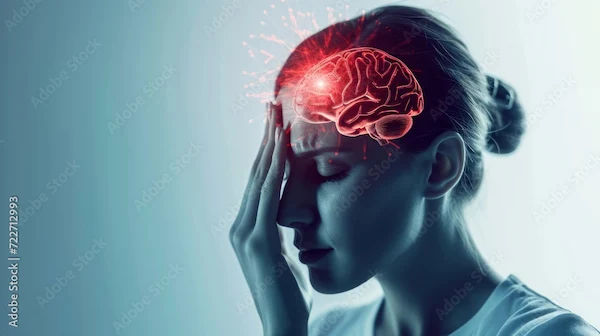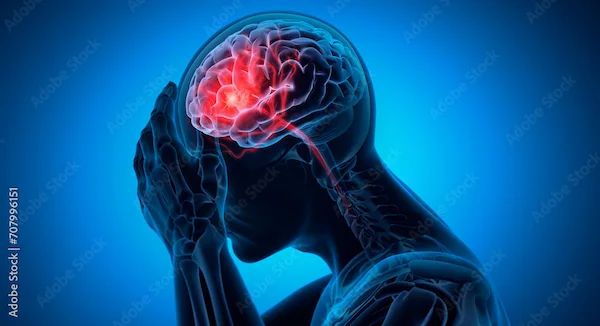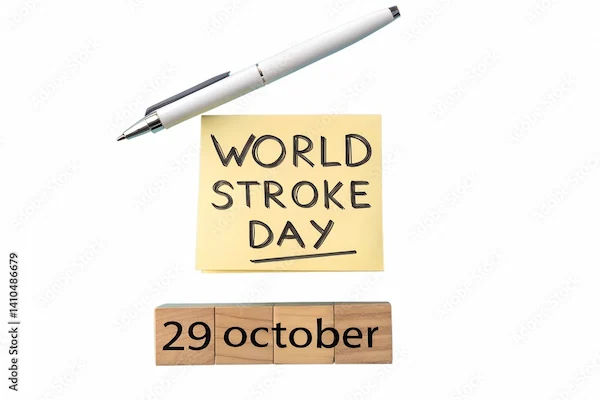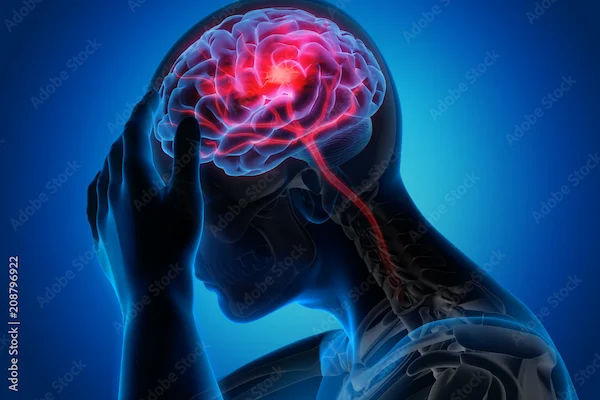Stroke Response Time: The Importance of Quick Action in Saving Lives
A stroke is a medical emergency which requires immediate action. It is a leading cause of death and long-term disability globally, but timely intervention can significantly reduce its impact. The faster medical treatment is provided after the stroke, the better the chances of survival and recovery.

Written by Dr.Sonia Bhatt
Last updated on 3rd Jul, 2025

The Impact of Stroke Response Time
The speed with which stroke treatment is administered directly impacts a patient’s outcome. The concept of time as the brain is central to understanding why quick intervention is necessary. During a stroke, brain cells are deprived of oxygen and nutrients due to a disruption in blood flow, which leads to their death. The longer the brain goes without oxygen, the greater the extent of damage, and the less likely it is that the patient will recover normal brain function.
Every minute counts in stroke treatment. For each minute of delay in treatment, 1.9 million neurons (nerve cells) are lost, which can lead to permanent disability or even death. Therefore, acting quickly to provide treatment can drastically reduce brain damage, minimise disability, and improve the chances of full recovery.
A stroke patient who receives treatment within three hours of the onset of symptoms can reduce the risk of death or severe disability by up to 30%. This highlights the need for fast recognition of symptoms and rapid access to emergency care.
The “Golden Hour” in Stroke Treatment
The “golden hour” refers to the first hour after a stroke, a crucial window during which treatment can significantly impact outcomes. During this period, the goal is to restore blood flow to the brain as quickly as possible to limit the damage. The quicker the treatment, the more brain tissue can be saved, and the better the patient's long-term prognosis.
For ischaemic strokes (which account for around 85% of all strokes), the primary treatment involves the use of clot-busting medications. One such medication is tPA (tissue plasminogen activator), which dissolves the clot and blocks blood flow to the brain. This drug is most effective when administered within three to four hours of the stroke’s onset. After this window, the risk of complications and the drug’s effectiveness significantly decreases.
For more severe cases of ischaemic stroke, where tPA alone may not be sufficient, doctors may opt for a procedure called mechanical thrombectomy. This procedure involves physically removing the clot using a catheter. Mechanical thrombectomy can be performed up to 24 hours after symptom onset; depending on the location of the clot and the patient’s overall health, mechanical thrombectomy can be performed up to 24 hours after symptom onset. However, it is most effective when performed as soon as possible.
For haemorrhagic strokes, which occur when a blood vessel in the brain ruptures, the treatment approach is different. The priority is to stop the bleeding and relieve pressure on the brain. However, the timing of intervention is still critical. The quicker the bleeding can be controlled, the lower the risk of severe brain damage or death.
Why Quick Action Saves Lives
The primary reason why quick action can save lives in the event of a stroke is that it directly limits the extent of brain damage. During a stroke, the brain tissue that is deprived of blood and oxygen begins to die rapidly. The first 90 minutes are significant. By acting swiftly, doctors can prevent or minimise the size of the “core infarct” (the area of brain tissue that is irreversibly damaged) and protect the surrounding penumbra (the region of the brain that is still viable but at risk of damage if not treated quickly).
Early treatment also plays a role in reducing the likelihood of complications associated with stroke, such as:
Swelling in the brain can occur when brain cells are damaged and the blood vessels leak fluid. This can lead to increased pressure within the skull, which may cause additional damage. Quick intervention can help reduce swelling and prevent further injury.
Blood clot formation: Blood clots can worsen an ischaemic stroke. Fast-acting treatment helps dissolve or remove the clot before it has time to spread or cause more harm.
Seizures and other neurological complications: Strokes can lead to secondary neurological complications, such as seizures. Timely treatment reduces the risk of such complications, allowing for better overall outcomes.
The quicker the blood flow is restored to the brain, the less damage is done to the cells. This allows for a better chance of recovery and a reduced risk of long-term disability. Even if a stroke victim experiences some impairment, the severity will often be far less if the response is rapid.
How Long Does It Take to Get Treatment for a Stroke?
The time it takes to get treatment for a stroke can vary depending on several factors, but the key to improving outcomes is to act immediately. Response time can be broken down into three key stages:
Recognising symptoms and seeking help: The first step is to recognise the signs of a stroke and seek emergency medical assistance. This stage is crucial, as delay in recognising symptoms can lead to lost time. Ambulance services are well-equipped to handle emergency stroke cases and provide immediate care en route to the hospital.On average, it takes an ambulance 15-30 minutes to arrive after a call is made, though this can vary depending on location and traffic conditions. The quicker the emergency services arrive, the sooner they can begin stabilising the patient and administering treatments like oxygen, blood pressure management, or medication to prevent further damage.
Hospital arrival and initial assessment: Once the patient arrives, rapid assessment and diagnosis are essential. The goal is to confirm whether the stroke is ischaemic or haemorrhagic and identify the best treatment options. This process often includes imaging techniques such as CT or MRI scans.This stage typically takes less than an hour, with most hospitals focusing on fast-tracking stroke patients to minimise delays. Hospitals with dedicated hyperacute stroke units have been shown to offer better outcomes due to their specialised teams and equipment. Patients should generally be assessed and treated within 60 minutes of arrival.
Treatment initiation: Once the stroke type is identified, treatment can be initiated. If the patient is eligible for thrombolysis (clot-busting medication), this can often be started within minutes of diagnosis. Mechanical thrombectomy can also begin relatively quickly, though certain patient factors, such as clot location, may influence the exact timing.
Generally patients who receive tPA within 60 minutes of arriving at the hospital have significantly better outcomes than those who experience delays.
The Importance of Stroke Centres and Timely Access
Not all hospitals are equipped to provide the most advanced stroke treatments. Stroke centres or hyperacute stroke units offer specialised care for stroke patients. These units are designed to deliver rapid, targeted interventions, increasing the chances of a positive outcome. Hospitals that follow the best practices for stroke care pathways, from rapid imaging to prompt treatment with clot-busting drugs or thrombectomy, can significantly improve response time and outcomes. In some areas, air ambulances or fast-track hospital transfers are available for patients far from major stroke centres. These measures ensure patients receive optimal care as quickly as possible, regardless of location.
Conclusion
The importance of stroke response time cannot be overstated. Time is the most critical factor in minimising the damage caused by a stroke and improving recovery chances. The first hour, often called the “golden hour,” is the most critical window for administering life-saving treatments, such as clot-busting medications or mechanical thrombectomy. Delays in treatment can lead to irreversible brain damage and long-term disability, but quick action can significantly improve outcomes. To improve stroke response time, it’s essential to recognise the symptoms and seek immediate help. Once in the hospital, specialised stroke units and rapid intervention are key in reducing brain damage and increasing the chances of survival and recovery. Understanding the critical importance of time and taking swift action can make the difference between life and death or between severe disability and a full recovery. If you or someone you know experiences the signs of a stroke, don’t hesitate—call for help immediately and ensure that every minute counts.
Consult Top Neurologists
Consult Top Neurologists

Dr. Abhinav Gupta
Neurologist
18 Years • MBBS, MD (GENERAL MEDICINE), DM (NEUROLOGY)
Ghaziabad
Bhava Neurocenter, Ghaziabad

Dr Rajashekar Mummadi
Neurologist
2 Years • MBBS, DNB General Medicine, DRNB Neurology
Hyderabad
Dr Ram's Neuro Clinic, Hyderabad
Dr. Annakula Ramu
Neurologist
7 Years • MBBS, MD General Medicine, DM Neurology
Jagtial
Sairam Neuro and Children Hospital, Jagtial

Dr. Uddalak Chakraborty
Neurologist
8 Years • MBBS, MD(GENL.MED.),DM(NEUROLOGY)
Kolkata
MCR SUPER SPECIALITY POLY CLINIC & PATHOLOGY, Kolkata
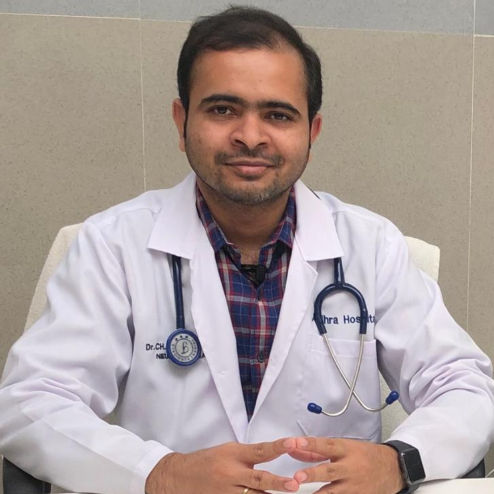
Dr Chandu Samba Siva Rao
Neurologist
7 Years • MBBS, MD GENERAL MEDICINE, DM NEUROLOGY
Vijayawada
Chandu Neuro Center, Vijayawada
